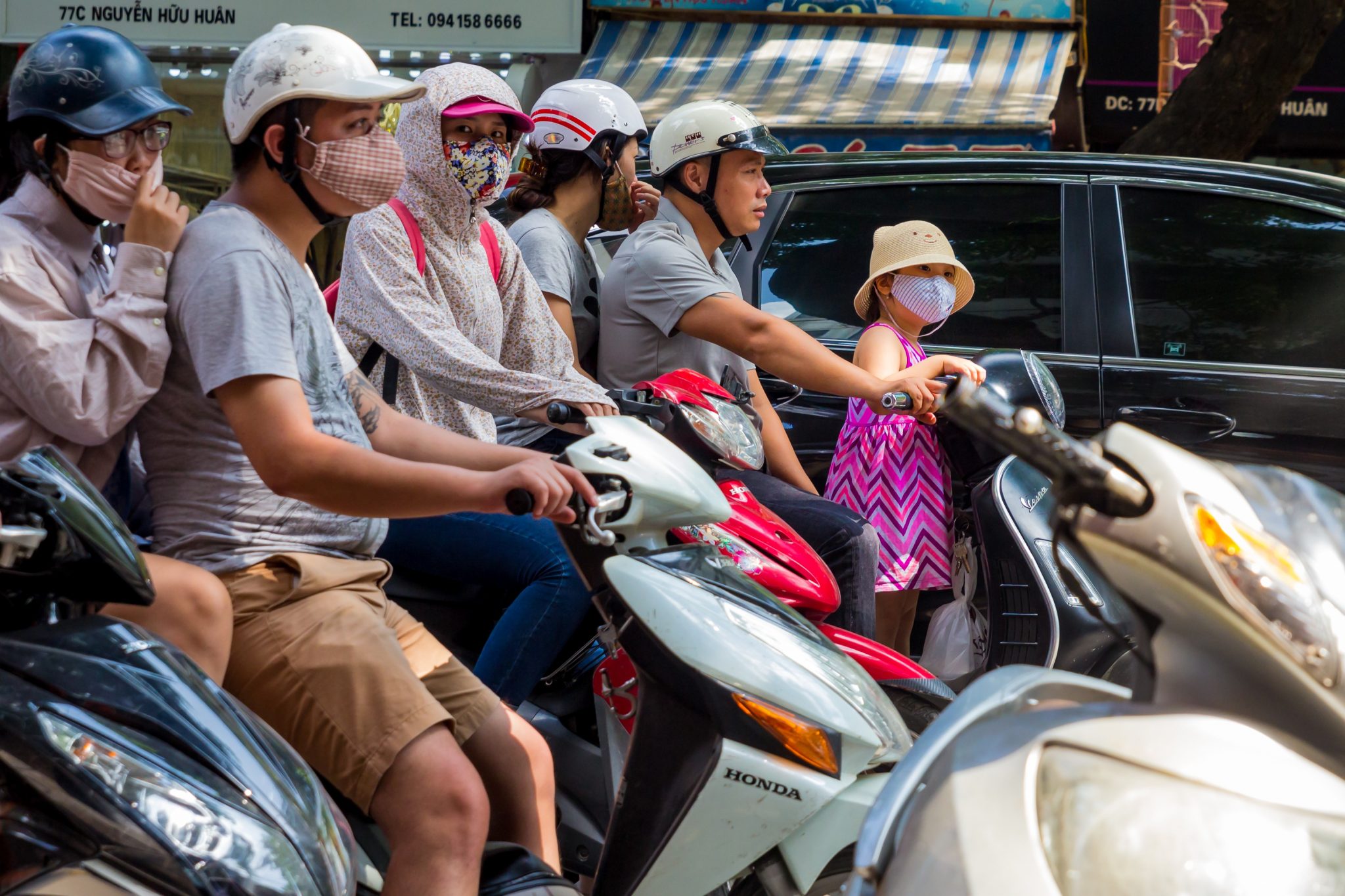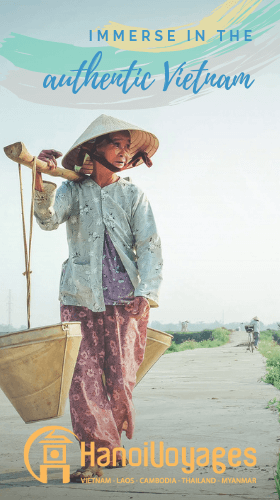The other side of the world, Asia and in particular Vietnam is for sure, a different universe. Everything differs – the way of life, the language, behaviour, body language and so on. So for those who travel far from home, we can assure you that you have a lot to expect and to discover about the Vietnamese culture. It can be difficult when arriving at destination, not to feel at home or to be disoriented. That’s why we tell you before travelling the stranger things you should expect to see to be well-prepared to culture change.

1. Traffic: An Organised Mess
This is surely the first thing you will notice when arriving in Vietnam. Traffic can be a nightmare, especially in the main cities like Hanoi and Ho Chi Minh City. Like a hive of activity, maybe traffic looks crazy, but actually the Vietnamese know exactly (or nearly) what they are doing and everyone is used to this. Then, as indicators aren’t enough, they use to honk every 20 seconds to let you know they’re here or because they want to overtake. The more they honk the more they want to overtake. Also, about traffic lights – red or green, as a matter of fact, they don’t mind. “Everything is possible” so riding a motorbike can be very nice and make you feel free somehow but be aware and cautious of the danger that surrounds you.
Motorbikes

Motorbikes are the main means of transport as 90% of the population in Ho Chi Minh and Hanoi owns one. Young or old, even from their early age the Vietnamese can ride a motorbike, and they use it for everything: transport, shopping, carrying huge and large things or even for a nap. Plus, it’s not unusual to see people riding on the opposite side of the lane, overtaking on the right, holding their baby or being 3 or 4 in a motorbike. Of course, a lot of accidents occur…
Did you know?
If 90% of the adults wear a helmet, less than 40% of children wear one (2017). Since 2007, helmets shall be worn except for children who are less than 6. But, all above, according to research done by WHO in 2009, 67% of parents think the helmet can provoke neck injuries. Children’s neck and spine are considered to be too weak to support the weight of the helmet.
Buses and cars
There are fewer cars and buses than motorbikes but they might be the most dangerous, especially buses as they go very fast and don’t hesitate to overtake even when it’s “not possible”.
Walking in Vietnam
First, being a pedestrian in main cities in Vietnam isn’t so easy. Indeed, people are addicted to their motorbike and it can look strange for them if you walk for a long distance. You’ll see that pavements are not dedicated to pedestrians but more for parking motorbikes, and in general walking in means slaloming between them. Also, for foreigners, crossing roads for the first time is always critical. Even if there are zebra crossings, pedestrians do not have priority!
Here some tips to cross safely:
- Look to your left and right
- Let cars and buses pass
- Make a sign with your hands to warn drivers
- Cross and do not stop suddenly or run. They will avoid you.
- Be relieved for surviving
Did you know?
Everyone wears a mask because of pollution, authorities have decided to regulate heavy traffic and reduce air pollution with the project (still in progress) of building metro lines in Hanoi and Ho Chi Minh City.
2. Habits & Behaviour
Spitting in public
You will notice that in Vietnam, there’s no shame to spit in public or wear pyjamas in the street. Indeed, it’s possible to see some people (men most of the time) hawk, spit, blurb or picking their nose in the middle of the street or in public spaces. Even in Vietnam, this is a rude manner but it happens more often than you might use to see/hear.
Speaking loudly
Another point foreigners notice when visiting Vietnam is that Vietnamese people speak loudly and sound aggressive to foreigners. Is it because of the Vietnamese tones? Maybe. But know that speaking loudly or even shouting doesn’t mean they are aggressive towards you. This is just their way of talking.
No queueing
If in your country queuing is a habit, you’ll see that in the Vietnamese culture queuing doesn’t exist. At the supermarket, at the airport or at the bus and ferry stations people will try to pass you. And we know that it can be seen as rude. For example, it often happens someone asks the cashier to go first because they have few items, but even if you have only 1 item they will try to pass you. Some cashiers will accept and some won’t. Unfortunately, no one can really explain where this bad habit comes from.
Why do men have long nails?
If it’s more common to see women with long nails in your country, it might be a bit strange to see men with nails longer than women. Centuries ago in Asian countries and also in Vietnam, it was a symbol of wealth. So, farmers couldn’t have long nails as they worked in fields and it was easy to break them. Actually, nowadays, the explanation is confusing and you won’t see it anymore or only on a few people. It can still have the same meaning but now it’s maybe just a trend.
Wearing pyjamas on the street
Don’t be surprised to see the elderly and women with their children still wearing pyjamas on the street in the early morning and in the evening. In the Vietnamese culture, that’s a normal thing. They just want to be comfortable and be ready to go to bed after all.
The Asian squat
You have probably heard of this way of sitting and the Vietnamese do it a lot. There’s no explanation for this habit but this is without any doubt unique to the Vietnamese culture. For example, If they need to wait in the middle of the street, they might sit like that. Sometimes, they also sit in tiny chairs which are level with the ground.
Afraid of the sun?
If for you, sun and warm means short clothes, for the Vietnamese it’s the opposite. When it’s time for high temperatures and sunny days, people
(especially women) go outside covered from head to toe with a Áo chống nắng as they call it. First explanation: they are afraid of consequences it can happen to their skin. Second explanation: they don’t want to tan because having white skin like Occidental women is a sign of beauty and high social status. You won’t see any Vietnamese wearing bikinis at the beach during the afternoon. But when the sun sets, they’re all out! However, it needs to be admitted that it’s very hot and you feel like you roast yourself.
3. Weird Local Street Food

Eating is important and for those who travel to Vietnam, finding food that doesn’t match with your taste buds isn’t so easy, especially when it’s about meat. Often in markets, you will see meat exposed on a table with any cool storage… Vietnamese cuisine is mainly made of meat with local vegetables and fruits. For example, you can find weird dishes such as fetal duck egg, worms, rats, dogs… And the Vietnamese eat EVERYTHING from meat! Discovering the Vietnamese culture is part of your journey so you should at least have weird food dishes in your must-eat list ;). Besides weird food, there are obviously delicious dishes and fruits you will taste. You will also notice that the local restaurants are located in the street or even on the pavements. It might look really not hygienic or not tasty but actually, these are the places you will taste the best local food – as authentic as it is! So, give it a try!
4. Careless about the Environment
Vietnam is growing and we can still notice the country hasn’t reached its peak yet. As they’re focusing on it first, the environment is not their priority, and unfortunately for some foreigners, it can be a shock. With a lack of cleaning system, it’s not surprising to see waste in the middle of the street or in the environment. There are few litters and it’s not easy to find some even in cities.

Then, you’ll see that plastic is used everywhere and they use it a lot- especially plastic bags and straws. What can be the most shocking is that they throw out plastic waste in the street, rivers and also leftover food in manholes. At night, it’s possible to smell burning plastic even if people live just next door. As a result, it seems that the Vietnamese are still not entirely aware of the consequences and risks it can have for their health. However, there are always some people who try to change it with, for example, the use of a bamboo toothbrush or refilled water bottles.
More about
Vietnamese culture
1. Relationships With the Others
Family is the key

In the Vietnamese culture, the family is really important and in general, you will find extended families. It means that children, parents and grandparents live under the same roof to help and take care of each other. Within the family, there’s a hierarchy system where elderly people should be treated with great respect. As they get a lot of experience during their whole life, they should know what’s right or wrong. They are an example for the young members of the family. Most of the time, children leave the nest when they get married and it happens when they’re still young. Family is so essential that they dedicate their weekends to their family as well as Family Day and Children’s Day.
Calling out to the others
They have different ways to communicate with others so you should be careful of the way you speak to people, in particular, the elderly as we mentioned before. Indeed, they assign a specific title to the people depending on their age and social status. Instead of calling out to someone by his name or “Madam” or “Sir”, they will use anh, chị, em, + ơi for example. You will hear a lot of Vietnamese using those words to call the others. This is pretty much important between the Vietnamese to have a title and it’s not uncommon to ask for their age.

2. Religion
Buddhism is extremely important in Vietnam and besides Catholicism, most of the people practice this religion. Everywhere in cities, villages and in the countryside, there are pagodas and temples. In all religious places and many homes, restaurants and official buildings, you will see altars. They are usually composed of flowers, incense burners, oil lamps and space for offerings (fruits, tea, money…). For example, you might see an altar at on the floor at the entrance of restaurants, shops or workplaces which is dedicated to the God of Lands who protects the whole place and offers fortune and wealth for people’s business. On the opposite, altars placed high up are those in homes and dedicated to ancestors.
Also, have you heard about Tet in Vietnam?
Did you know?
Putting chopsticks straight up in a vertical way into your food is something you MUST NOT DO. It reminds incense burners so dead people.
We won’t tell you too much because discovering new and weird things is part of the magic of a holiday! Just be prepared and learn from it. It can bring great things to you like having another point of view of the world. So, follow those rules:
Analyse, Accept, Adapt, Appreciate 😉








